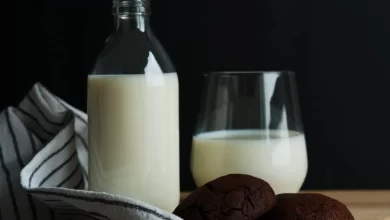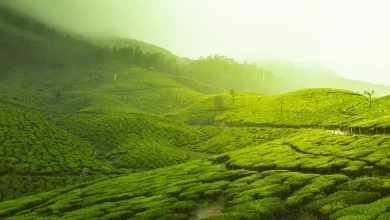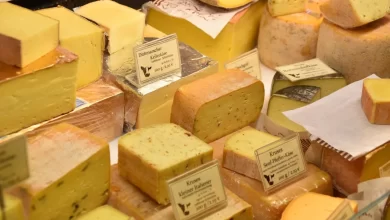Whiskey is a distilled spirit that has been enjoyed around the world for centuries. It is made from grains such as barley, corn, rye, or wheat that are mashed, fermented, and then distilled to produce a clear liquid. This liquid is then aged in oak barrels, which gives whiskey its distinctive colour and flavour. Whiskey is often enjoyed neat, meaning without any additional mixers or additives, but it can also be used in a variety of cocktails. In addition to being a popular alcoholic beverage, whiskey has also played an important role in cultural traditions and historical events. Whether sipped slowly on its own or mixed into a cocktail, whiskey continues to be a beloved drink among many people around the world.
- Whiskey can be made from a variety of grains, including barley, corn, rye, and wheat, with each type of whiskey having its own unique flavour profile.
- The age of whiskey is determined by the amount of time it spends in oak barrels. The longer it is aged, the more complex and mellow its flavour becomes.
- The word “whiskey” comes from the Gaelic phrase “uisce beatha,” which means “water of life.”
- Whiskey can be produced in many countries, but some of the most well-known varieties come from Scotland (Scotch), Ireland (Irish), the United States (Bourbon), and Canada (Canadian).
- Bourbon whiskey must be made in the United States and must be aged in new, charred oak barrels. It also must be made from a mash bill that contains at least 51% corn.
- Scotch whiskey must be made in Scotland and aged for a minimum of three years in oak barrels. It is often categorized based on the region where it was produced, with each region having its own distinct flavour characteristics.
- Irish whiskey is typically triple-distilled, which gives it a smoother and more approachable taste than some other types of whiskey.
- Whiskey has played an important role in many cultural traditions and historical events, including the American Revolution and the Scottish Highland games.
- Whiskey can be enjoyed neat, on the rocks (with ice), or in a variety of cocktails, such as the Manhattan, Old Fashioned, and Whiskey Sour.
- The production of whiskey is a highly regulated process, with strict rules governing everything from the ingredients used to the methods of distillation and ageing.
- The production of whiskey is a long and complex process that involves several steps, including milling, mashing, fermentation, distillation, and ageing.
- The demand for whiskey has grown significantly in recent years, with more people around the world developing a taste for this iconic spirit.
- Whiskey can be enjoyed at different temperatures, but the ideal temperature range for sipping whiskey is typically between 55-65 degrees Fahrenheit.
- Whiskey is a high-proof spirit, with most varieties containing between 40-60% alcohol by volume.
- Some whiskey enthusiasts collect rare and vintage bottles of whiskey, which can be worth tens of thousands or even hundreds of thousands of dollars.
- In addition to the traditional types of whiskey, there are also flavoured whiskeys, such as honey-flavoured whiskey or cinnamon-flavoured whiskey.
- The process of distilling whiskey has remained largely unchanged for centuries, but advancements in technology and equipment have made the process more efficient and consistent.
- Whiskey can be paired with a variety of foods, including cheese, chocolate, and smoked meats.
- Whiskey is often associated with masculinity and is sometimes referred to as a “man’s drink,” but there are many women who enjoy whiskey as well.
- The popularity of whiskey has led to the creation of numerous whiskey-themed events, such as whiskey tastings, distillery tours, and whiskey festivals.
- Whiskey has a distinct smell due to the presence of certain compounds, including esters, aldehydes, and ketones, which are created during the fermentation and ageing process.
- The oldest known whiskey distillery in the world is Bushmills in Northern Ireland, which was established in 1608. It is also the oldest licensed whiskey distillery in the world.
- Whiskey was one of the first spirits to be taxed by the government, with the first tax on whiskey being introduced in Scotland in 1644.
- The world’s largest producer of whiskey is Diageo, a British multinational beverage company that owns brands such as Johnnie Walker, Crown Royal, and Bulleit.
- The shape of a whiskey glass can impact the way the whiskey tastes, with certain glasses designed to enhance the aroma and flavour of the spirit.
- Whiskey can be used in a variety of ways beyond drinking, such as in cooking, baking, and even as a cleaning solution.
- The most expensive bottle of whiskey ever sold was a 60-year-old Macallan, which sold for over $1 million at auction.
- The most expensive whiskey is Isabella’s Islay which has a price tag of 6.2 Million USD. It is expensive because of the decanter that contains it.
- Whiskey has a long history of being used for medicinal purposes, with some doctors in the past even prescribing it to treat ailments such as colic, toothaches, and insomnia.
- Whiskey was once smuggled across borders and sold illegally, leading to the development of the term “bootlegging” in the United States during the Prohibition era.
- Some whiskey enthusiasts prefer to drink their whiskey with a small amount of water or ice, which can help to open up the flavours and aromas of the spirit.
- The production of whiskey is a time-consuming and labour-intensive process, with some varieties taking years or even decades to fully mature in oak barrels.
- Whiskey can be distilled to a variety of strengths, but most varieties are distilled to around 70% alcohol by volume (ABV) and then diluted with water to reach the desired strength.
- The art of barrel-making, known as cooperage, is an important part of the whiskey production process, as the type of barrel used can greatly impact the flavour and colour of the whiskey.
- In some countries, such as Japan and Taiwan, whiskey has become increasingly popular in recent years, with distilleries in these countries winning awards and gaining international recognition.
- Whiskey is often associated with strong flavours and aromas, but there are also lighter and more subtle varieties, such as Irish whiskey or Japanese whisky.
- The age of whiskey is typically listed as the youngest whiskey used in the blend, meaning that a 12-year-old whiskey may contain some whiskey that is much older than 12 years.
- The production of whiskey involves a lot of trial and error, with distillers often experimenting with different grains, yeast strains, and ageing techniques to create new and unique flavour profiles.
- Whiskey can be enjoyed in a variety of ways, including straight, on the rocks, or in cocktails such as the Manhattan or the Whiskey Sour.
- Whiskey has inspired numerous songs, movies, and literary works over the years and continues to be a beloved and iconic spirit around the world.
- Whiskey has been used as a currency in the past, with some merchants accepting whiskey as payment for goods and services.
- The Scottish author Sir Walter Scott once referred to whiskey as “the king of drinks.”
- The alcohol in whiskey is a natural preservative, which helps to prevent spoilage and decay.
- Some whiskeys are double or even triple-distilled, which can result in a smoother and more refined flavour profile.
- The colour of whiskey comes from the oak barrels in which it is aged, as the wood releases tannins and other compounds that give the whiskey its characteristic colour and flavour.
- Whiskey can be aged for many years, with some varieties being aged for several decades or even a century.
- The alcohol in whiskey is flammable, which means that it can be used as fuel for lamps, stoves, and other appliances.
- Some whiskeys are bottled at cask strength, which means that they are not diluted with water and retain their full alcohol content. These whiskeys can be extremely potent and should be consumed with caution.






